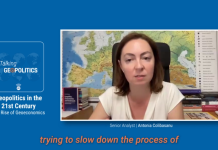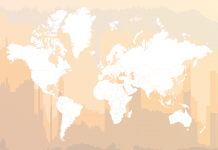With some notable and grave exceptions, the COVID-19 crisis is winding down for much of the world. But as it does, another problem is popping up, one that could with little effort turn into another crisis. Put simply, there is not as much stuff flowing as there once was.
There is, for example, a well-documented shortage of microchips. The most common explanations for it are friction in the production process due to personnel rules developed to fight COVID-19, along with a significant increase in demand for microchips for a range of products, including automobiles.
There is a shortage of chickens said to be developing in the United States due to increased demand and a lack of workers.
There is a shortage of copper, the price of which is surging, due to increased demand and decreased supply.
There is a shortage of plastics that seems to have originated in the testing and production of the COVID-19 vaccine.
There is a shortage of truck drivers in the U.S., apparently the result of insufficient numbers of instructors. The length of time needed to become a truck driver in the U.S. has increased from two months to six months.
There is, relatedly, a looming shortage of gasoline.
There are reports of supermarkets not receiving shipments from producers. The reason given is the shortage of truck drivers, along with shortages of certain products that cannot be produced without scarce components.
There is a shortage of chlorine, which is used in many things, including swimming pools. This could be as bad for the hospitality industry as it is for the social needs of children in the upcoming summer.
Finally, and far from least, there is a looming shortage in ketchup, the cause of which I have no idea.
This is just a partial list, of course, and though I’m sure the shortages are more complicated than I have so far explained, it’s clear that the shortages are real and that they will take some time to harmonize.
They have some things in common. First, the COVID-19 regulations inevitably disrupted the physical production of things, like chicken and copper. The introduction of Zoom allowed management and intellectual production to continue, but the things that are lacking now are material things that required physical presence. Demand was constrained by unemployment and caution in moving about for a time, so there was a delay in when the shortages started and when we started to really notice. Second, as people get vaccinated or simply go about their daily lives again, demand will outstrip the supply. Last, the pandemic created a displaced workforce. Physical workers could not afford to endure layoffs and reduced hours. They had to get creative in finding other jobs or perhaps starting their own businesses. They might have been paid less, but their old jobs were not available. At some point in the crisis, they had to find work to earn steady incomes and now are disinclined to leave.
There are far more specific and complex reasons for the problems in every industry. But there is a core underlying theme. The rules promulgated to fight COVID-19 affected the physical production and delivery of goods – and their workers – more than it affected intellectual and white-collar work.
As the market for labor changed, it became more difficult to refill these roles. The demand may be there, but the supply has to be manufactured. Policymakers seeking to increase demand in this environment may assume the problem can be readily solved – and maybe it can be – or they just don’t understand the problem they’re facing.
Obviously, one of the reasons for the employment crisis is increased unemployment payments, which are seen as more steady and stable than certain job markets.
And there are issues that have nothing to do with staffing. But the breadth of shortages across industries has some common denominators, including changes in the opportunities for workers and in demand for certain products. The pandemic has structurally changed the economy, as was inevitable, and to some extent, it will not return completely to the prior form. The shortages represent the first wave of disruptions in a longer process.
Some of these problems are limited to a nation. Others are global. Microchip shortages make it difficult to produce cars. The auto industry is central to several nations such as Germany, so the impact on the European Union and Germany’s national strategy will likely be significant if solutions are not found quickly. Likewise, for China, the world’s largest consumer of copper, increased prices may force business owners to reconsider products that use a lot of it. China may then face a choice between taking losses or closing a product line.
Early in the pandemic, I expressed my concern about the economic consequences the lockdown measures would eventually have. I knew there would be a recession, and feared a depression if the supply chain broke down. Mercifully it did not, but now that there is light at the end of one tunnel, demand is surging again, and the shape of the workforce is now very different than it once was. In every affected country – indeed, most of the world – governments will have to address a problem they are not used to: a lack of supply.







